Khaled al-Jeratli | Ali Darwish | Jana al-Issa
News about the opening of the Abu al-Zandeen crossing in the eastern Aleppo countryside, between areas controlled by the Turkish-backed Syrian National Army (SNA) and areas controlled by the Russian-backed regime, has stirred stagnant waters for about five years. This has created a controversy that has evolved into protests from those opposing this step among the residents of the city of al-Bab, which hosts the crossing.
The step was taken under a Turkish-Russian agreement, absent Syrian parties. The opposition sees the step as devoid of political dimensions, while the Syrian regime ignores the issue of the crossing’s opening through its official media channels, despite over a month passing since the announcement of its reopening.
Abu al-Zandeen, which closed its doors in 2020, had been used during those years as a point for the exchange of prisoners and detainees between the opposition and the regime but never took the form of an official crossing. Today, it is being discussed as both a commercial and humanitarian crossing between the two sides.
Residents of northern Aleppo fear the reopening of the crossing, seeing it as a gateway to normalization with the regime or security breaches. The region’s components, which have been outside regime control for more than ten years following confrontations with regime forces and allied militias, reject this, especially those who joined the former Free Syrian Army (FSA) after 2011.
In this report, Enab Baladi discusses, through sources and with experts and researchers, the mechanism of the crossing’s operation, the movement of shipments, the risks it may pose to the region, and the benefits both sides might gain as shipments start passing through it.
How will Abu al-Zandeen operate
Amid a wave of anger caused by the news of the crossing’s opening, components of the Syrian opposition refused to answer details about its operation and the entity managing it. The region is controlled by the Syrian National Army and governed by its political umbrella, the Syrian Interim Government (SIG).
The National Army has a long history of disputes over the management of crossings, with its components continuously fighting over control of various crossings and checkpoints. The Interim Government has been unable to find solutions to these issues.
Regarding the Abu al-Zandeen crossing, the media office of the Interim Government ignored questions posed by Enab Baladi about the mechanism of the crossing’s management and the responsible entity.
The local council in the city of al-Bab, which announced the reopening of the crossing, refused to provide information about the specific details, asserting that the Interim Government is responsible for clarifying these details.
Enab Baladi contacted the General Directorate of the Military Police affiliated with the Ministry of Defense in the Interim Government (the entity responsible for managing the crossing), but they ignored inquiries about the mechanism of operation and management of Abu al-Zandeen.
A source familiar with the crossing’s operating mechanism told Enab Baladi that the ignoring of questions about the crossing’s management and mechanism is due to the Syrian entities’ lack of knowledge about this mechanism.
The source, who spoke on condition of anonymity for security reasons, added that Abu al-Zandeen was reopened by a Turkish-Syrian agreement, and the opposition was instructed by Turkey to facilitate its reopening without objection, with no additional clarifications provided by Turkey.
Details regarding the transfer of shipments between opposition-controlled areas and regime-controlled areas remain unclear. No entity has discussed inspection mechanisms, the nature of shipments to be transported, or the security risks that drivers of these trucks might face if they are from areas controlled by the opposition.
Enab Baladi obtained information from an administrator at the Abu al-Zandeen crossing indicating that some vehicles had entered regime areas from northern Aleppo.
The source, whose name Enab Baladi has withheld for safety reasons, stated that late on August 20, some trucks returned from the regime-controlled side after unloading their cargo near the regime’s checkpoint without any harm to their drivers.
The source added that the mechanism of vehicle operation through the crossing will involve a truck entering from the north of Aleppo, unloading its cargo on the other side, to be reloaded into another vehicle, which would then proceed deeper into the regime-controlled areas.
Opening Abu al-Zandeen is not linked to “reconciliation”
While the team preparing the report attempted to contact officials and workers in the Syrian Interim Government to obtain official comments on the crossing’s opening, the Minister of Defense in the Interim Government, Hassan Hamada, answered some of the inquiries.
Minister Hamada told Enab Baladi that the opening of commercial or humanitarian crossings with “enemy areas” is not linked to “reconciliation with the enemy who controls those areas.”
He added that the public support base and official institutions agree that “there will be no reconciliation, in accordance with the principles of the Syrian revolution.”
The Minister pointed to the existence of open crossing points with the Syrian Democratic Forces (SDF), the traditional enemy of the National Army and Turkey, adding that these points have not resulted in reconciliation, and the frontlines are still always active with the SDF.
The Minister of Defense in the Interim Government considered it in the public’s best interest in the “liberated areas” to open a crossing with areas controlled by the “PKK” (referring to the SDF) to allow the entry of necessary daily materials and to export the surplus produced in those areas, especially agricultural products.
Hamada also noted the existence of a “humanitarian” crossing aimed at “reuniting families separated by the Assad regime and terrorist parties.”
The Minister emphasized that crossing points are not motivated by political drives but by humanitarian objectives, which applies to all “crossing points” with enemy areas regardless of their designations.
He stressed that the Interim Government does not differentiate between the regime and the SDF, indicating that the Interim Government operates according to what the civilian interest dictates.
Internal crossings of the Interim Government
Internal crossings connect areas controlled by National Army factions and those controlled by the regime, the SDF, and Hayat Tahrir al-Sham (HTS), demarcating the geographical boundaries of these control zones.
The Abu al-Zandeen crossing is the only one linking areas controlled by the Interim Government with regime-controlled areas.
The crossing is located east of the city of al-Bab in eastern Aleppo countryside, near the village of al-Shamawiyah, which is under regime control. It is considered both a commercial and humanitarian crossing.
The areas controlled by the SDF, which form the military wing of the Autonomous Administration of North and East Syria (AANES), are connected with areas controlled by the National Army by several crossings: Al-Hamran, a commercial crossing near the city of Jarablus, connecting northern Aleppo countryside with Manbij in the eastern countryside, used only for transporting goods and managed by the Levant Front faction of the National Army.
Also, the Aoun al-Dadat crossing, a commercial point in southern Jarablus countryside, separates Interim Government controlled areas from those controlled by the SDF, in addition to the al-Halwanji humanitarian crossing about seven kilometers from Aoun al-Dadat, located in southern Jarablus countryside.
The National Army is accused of passing and smuggling some goods and people through these crossings for a fee, which it denies.
On the western side of areas controlled by the Interim Government, there are two internal crossings: the Darat Izza-al-Ghazzawiyah known also as Darat Izza Road, connecting Darat Izza in western Aleppo countryside with Afrin in eastern Aleppo countryside.
The second crossing is Deir Ballout-Atmeh, connecting northern Idlib countryside with northern and western Aleppo countryside.
The crossing points are not motivated by political drives but by humanitarian ones, which applies to all crossing points with enemy areas regardless of their designations. As revolutionaries, we do not differentiate between the Assad regime and the SDF, as both are enemies of the Syrian revolution. We operate according to what civilian interest dictates in the liberated areas.
Hassan Hamada, Minister of Defense in the Syrian Interim Government
The regime did not comment
On the northern bank of the Abu al-Zandeen crossing, the people of the city of al-Bab, east of Aleppo, stood on the roads protesting the passage of trucks, which caused a stir in the region. Meanwhile, the regime did not comment on the event, except for some voices that do not represent an official position.
While the name Abu al-Zandeen was not mentioned in statements issued by any body or government agency of the regime, the newspaper al-Watan, its close affiliate, was diligent in covering the developments. On August 22nd, it quoted unnamed sources saying that Ankara intervened to control “its militias” in reference to the National Army and to reconsider the protesters.
It added that the cessation of commercial truck traffic between the two sides of the internal crossing restored calm to the area where Abu al-Zandeen is located.
No commercial movement was witnessed in Abu al-Zandeen on August 21st, according to what was reported by the correspondent of Enab Baladi in the area.
The crossing was closed after some residents and fighters affiliated with the Syrian National Army headed to the crossing and prevented trucks from passing from opposition-controlled areas to regime-controlled areas.
Subsequently, the crossing was subjected to artillery shelling by an unknown source for the second time since its reopening, wounding three military police personnel.
Video recordings showed protesters and armed men preventing trucks from entering the crossing before its shelling.
Al-Watan newspaper, close to the regime, considered Ankara’s move to force protesters to accept the opening of the crossing as a step to “save face in front of the Russian guarantor” by completing the opening of the crossing and proceeding with the “understandings” of the Russian and Turkish capitals on the Syrian file, including opening international crossings and roads “that benefit both countries and the Syrian and Turkish peoples.”

A truck loaded with goods makes its way from opposition-controlled areas in the north to regime-controlled areas after the opening of the Abu al-Zandeen crossing, overseen by the Interim Government – August 18, 2024 (SNA)
Closure and reopening, Difficulties and risks
Before March 18, 2020, Aleppo’s countryside areas managed by the Interim Government were connected to regime-controlled areas by three crossings: Al-Hamran, Aoun al-Dadat, and Abu al-Zandeen, in addition to other crossings that linked Idlib with regime-controlled areas.
The internal crossings between opposition and regime-controlled areas were closed for several reasons, including military operations and the resulting shifts in geographical control.
These crossings were used to transport commercial goods between the control areas and the movement of civilians, and during which displacement convoys moved from various Syrian areas to northwestern Syria.
The Interim Government closed Aleppo’s countryside crossings, Al-Hamran, Aoun al-Dadat, and Abu al-Zandeen, on March 18, 2020, for trade and later civilian passage “to ensure citizen safety and prevent the spread of Covid-19,” according to the Interim Government at that time.
The crossings, including Abu al-Zandeen, remained closed until they reopened again on August 18 of this year, noting that during the years of closure, it was used in exceptional cases such as prisoner exchanges.
Security obstacles
The local council of the city of al-Bab paved the way for reopening the crossing on June 26 last year by announcing its experimental opening for 48 hours in preparation for it to be adopted as an “official commercial crossing,” which was met with popular rejection.
Researcher specializing in military affairs at the Jusoor Center for Studies, Rashid Hourani, said there are obstacles to reopening the crossing, all related to the security side “which is the main element for the continued operation of the crossing and the flow of convoys through it.”
Hourani explained to Enab Baladi that these difficulties do not only pertain to one side but include two sides: the first is the Syrian regime side and the attempts by Iranian militias to threaten the crossing and trucks by targeting fires.
The second side is the popular stance against reopening it, considering it a step that gradually recognizes the regime in the area. This stance is reflected through sit-ins that may escalate to forceful prevention, as happened on July 1 last year, when Turkish symbols were attacked due to Turkey announcing its rapprochement with the regime.
These disruptions on both sides of the control areas significantly affect the progress of reopening the crossing and may lead to its cancellation altogether, according to the researcher.
The announcement of the crossing’s experimental opening in June came amidst popular protests, and unwelcoming reactions from religious figures residing in northern Syria.
The Mufti of Azaz, north of Aleppo, Sheikh Mahmoud al-Jaber (Abu Malik), condemned the issue of opening the crossing and called for weighing the profits and losses of such a step.
Al-Jaber said, “What will we import from the regime? What does it have? It doesn’t have gas or petroleum, there are citrus fruits from the coast, so what will it offer apart from Captagon, drugs, corruption, and the like?”
Also, Abdul Razzaq al-Mahdi, one of the prominent preachers in the north, commented on the opening of the crossing, saying that it has serious repercussions, as it means the continuation of the “occupation of the regime’s militias and its allies” in the areas they recently seized, and there will be no battle against the regime soon.
The opening of the crossing, according to al-Mahdi, also means saving the regime from a severe crisis, which includes rising prices and a shortage of goods and materials, especially fuel, as well as flour and bread.
Abdul Razzaq al-Mahdi commented once again two days after the crossing was opened (August 20), considering it “a great evil and a significant danger (…) and the ruling applies to every crossing that opens whether in Saraqib or elsewhere,” and opening them is “forbidden and impermissible,” as the biggest beneficiary is the regime and its allies, while some traders benefit the least, and the biggest loser is the people.
Researcher Rashid Hourani attributed the divided stance of the National Army factions to two factors: the first is their proximity and distance from the Turkish side, and Ankara’s attempt to strengthen the factions close to it at the expense of factions that showed a degree of peer-to-peer dealings with the Turkish side in a previous stage.
The second factor is the economic benefit of the factions from the crossing and what this benefit provides in terms of strength and spread to them.
It can be said, according to Hourani, that there are factions that oppose and move to prevent the opening of the crossing, leaning toward Tahrir al-Sham or loyal to it, such as the Ahrar Olan who demanded they have a role in the crossing or they would prevent its opening, “because the opening of the (Abu al-Zandeen) crossing may threaten the commercial center in areas controlled by Tahrir al-Sham, represented by the city of Sarmada.”
Potential economic risks
Opponents of reopening Abu al-Zandeen fear it will stimulate drug smuggling made by the Syrian regime and facilitate its passage to opposition-controlled areas, despite the existence of smuggling crossings run by factions.
Meanwhile, some express concerns about the potential benefits to the regime from the crossing, apart from the benefits that may reflect on the area, as they see the regime’s benefit as greater, which is a sufficient reason to prevent its opening.
Economic researcher at the Omran Center for Strategic Studies, Manaf Quman, told Enab Baladi that among the risks surrounding the reopening of the crossing is the potential withdrawal of foreign exchange circulating in northwest Syria into the regime’s coffers in one way or another.
He added that importing the regime’s economic crises more significantly over time is likely; thus, fears of linking sovereignty files like recovery, reconstruction, and humanitarian response to the regime in Damascus.
Quman pointed out that there are benefits and advantages to opening the crossing for both parties, mainly enhancing the commercial movement and goods transportation between the two banks, whether for opposition areas or the regime.
Abu al-Zandeen, in nature, will contribute to reducing transportation costs, which in turn will reflect on price reduction and benefit people, thereby increasing financial revenues from customs duties for both the regime and the opposition.
This, according to Quman, will contribute to activating the local economy by creating new job opportunities, and lastly breaking the reliance on illegal smuggling routes between the two areas and legalizing trade and exchange.
The researcher considered that all the aforementioned will improve public services and rehabilitate infrastructure through those revenues.
Among the economic risks is the potential withdrawal of foreign exchange circulating in the north to the regime’s coffers in one way or another, in addition to importing the regime’s economic crises more significantly over time, thus linking sovereignty files like recovery, reconstruction, and humanitarian response to Damascus.
Manaf Quman, Economic researcher at the Omran Center for Strategic Studies
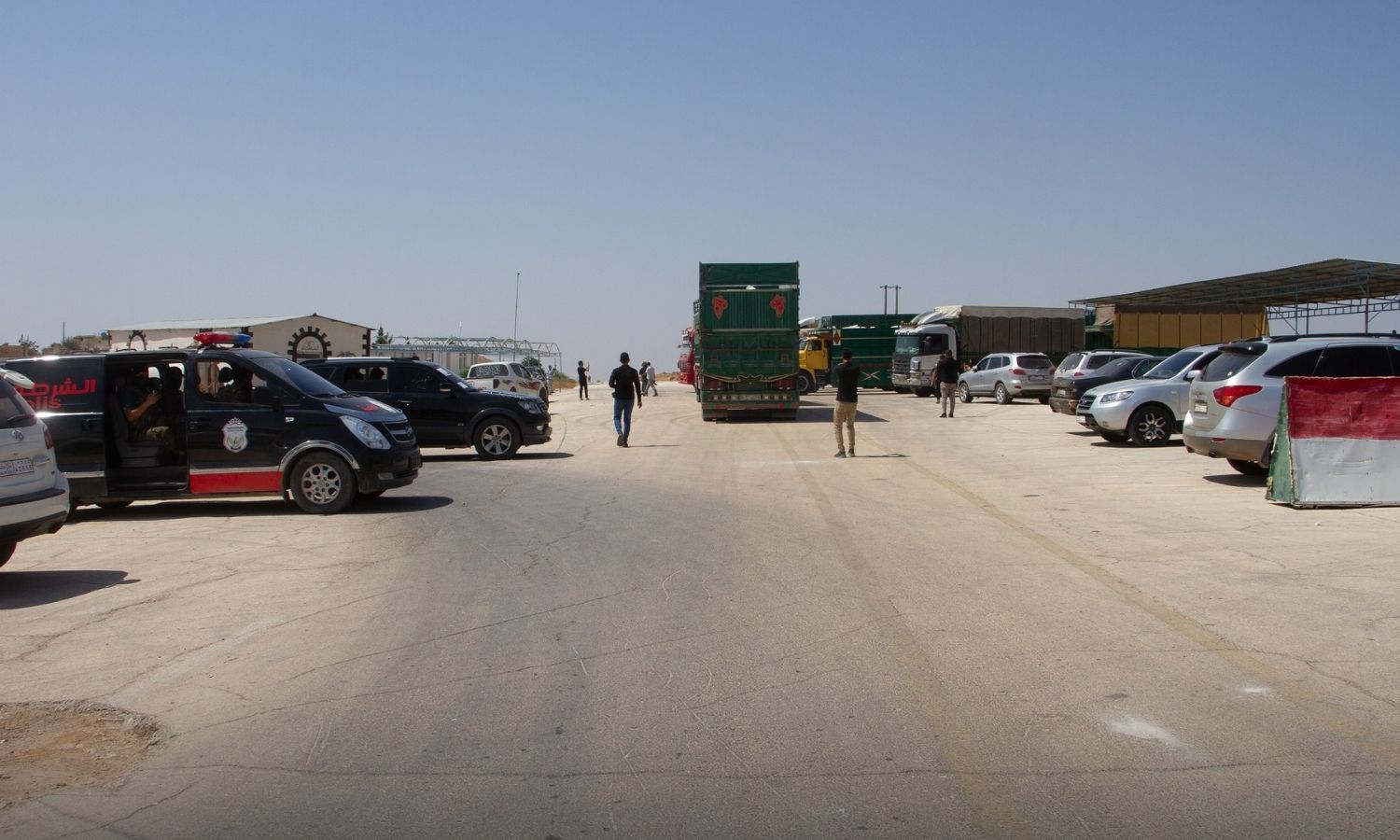
Opening the Abu al-Zandeen crossing in Aleppo’s countryside – August 19, 2024 (Syrian Press Agency – SPA)
Turkey is the main beneficiary
Regime and opposition areas may be positively impacted
Outside the political context, indicators suggest that reopening the Abu al-Zandeen crossing carries substantial economic benefits, as described by experts, which both Turkey and the Syrian regime may reap.
Details related to the nature of the economic trade activities through the crossing remain undefined, with expectations that they won’t be significantly valuable for opposition-controlled areas in northwestern Syria and regime-controlled areas due to the limited availability of materials in local markets. This points to a slim chance of market stimulation.
Conversely, observers believe that Turkey will derive the greatest benefit since the reopening aligns with Turkish-Russian understandings, potentially providing Turkish trucks with a quick overland route to Gulf countries.
In the long run, discussions suggest that the opening of the Abu al-Zandeen crossing is merely a first step toward Turkish economic normalization with the regime, which could result in several material gains for the regime in the future.
Turkey at the forefront
The talk about reopening Abu al-Zandeen was addressed by the Syrian Observatory for Human Rights (based in London) before the official announcement, specifically on June 13th. It reported from unnamed sources that Russian and Turkish forces were preparing to open the crossing.
On the same day, the local news agency “SNA” quoted an unnamed insider source, stating that meetings between Turkish and Russian sides were held at the crossing site to reactivate it.
It added that the proposal to open the Abu al-Zandeen crossing as a humanitarian crossing had been on the table for some time.
Economic expert Radwan al-Dibs believes that Turkey stands to gain the most from reopening the crossing, viewing it as a lifeline for its commercial trucks to pass towards the Arabian Gulf.
At the same time, the regime might benefit directly from transit fees charged on these trucks passing through its territory, and indirectly from the economic activities these trucks will induce, such as temporary accommodation costs for drivers or fuel purchases, according to al-Dibs.
Abdul Azim al-Mugharbel, an assistant researcher at the Jusoor Center for Studies, specializing in economic affairs, told Enab Baladi that various parties will benefit economically from the reopening of the crossing based on their size and influence, thus Turkey will benefit the most if transit enables opening international routes that could allow the export of its goods to different Gulf countries.
Domestically, both Interim Government controlled areas and regime areas will see comparable benefits, according to Al-Mugharbel.
The researcher suggests that factories in Interim Government areas could export their products through regime-controlled regions, generating financial returns and thereby creating jobs due to increased demand.
He added to Enab Baladi that the regime could also obtain raw materials used in production in its areas, or even essential commodities it needs, alongside the possibility of imposing fees on goods transiting through its regions toward other countries.
Obstacles: Sanctions and certificates of origin
Regarding the constraints on maximizing economic benefits, researcher Abdul Azim al-Mugharbel sees that the sanctions imposed on the regime might limit the benefits from importing or exporting products prohibited under these sanctions.
He added that the absence of certificates of origin in opposition-controlled areas might push traders to use certificates issued by the regime, besides that sending some products from northern Aleppo to the regime could lead to increased prices in opposition areas due to reduced supply, according to al-Mugharbel’s estimates.
Absence of certificates of origin in opposition areas may push traders to use certificates issued by the regime, and sending some products from northern Aleppo to the regime could result in increased prices in opposition areas due to reduced supply in the place of origin.
Abdul Azim al-Mugharbel, Researcher at the Jusoor Center for Studies
In a seminar titled “Opening Crossings with the Syrian Regime: Risks and Opportunities,” held by the Jusoor Center for Studies on July 17th, experts saw that the crossing’s opening at this time is related to the volume of trade between Turkey and Syria, which achieved “acceptable” figures before 2011 and began to rise again following Turkey’s intervention in Syria, increasing Turkish exports to Syria.
A significant portion of Turkish goods goes to regime-controlled areas, and reopening the crossing may pave the way for Turkish goods to reach new markets such as Lebanon overland.
In the same seminar, economic researcher at the Jusoor Center for Studies, Khaled Turkawi, commented that Turkey is the largest beneficiary of reopening the crossing, followed by factories operating in northern Syria that started to produce their goods and resorted to alternative energy solutions to support their industries.
The researcher believes that factories in northern Aleppo will export their goods through the Abu al-Zandeen crossing, in addition to making available agricultural products developed in the region where displaced people from various Syrian areas have settled.
Turkawi sees that the regime will be the least beneficiary from the crossing, as it will fail to export due to the dire economic situation in areas under its control and the absence of essential production components such as electricity and water.
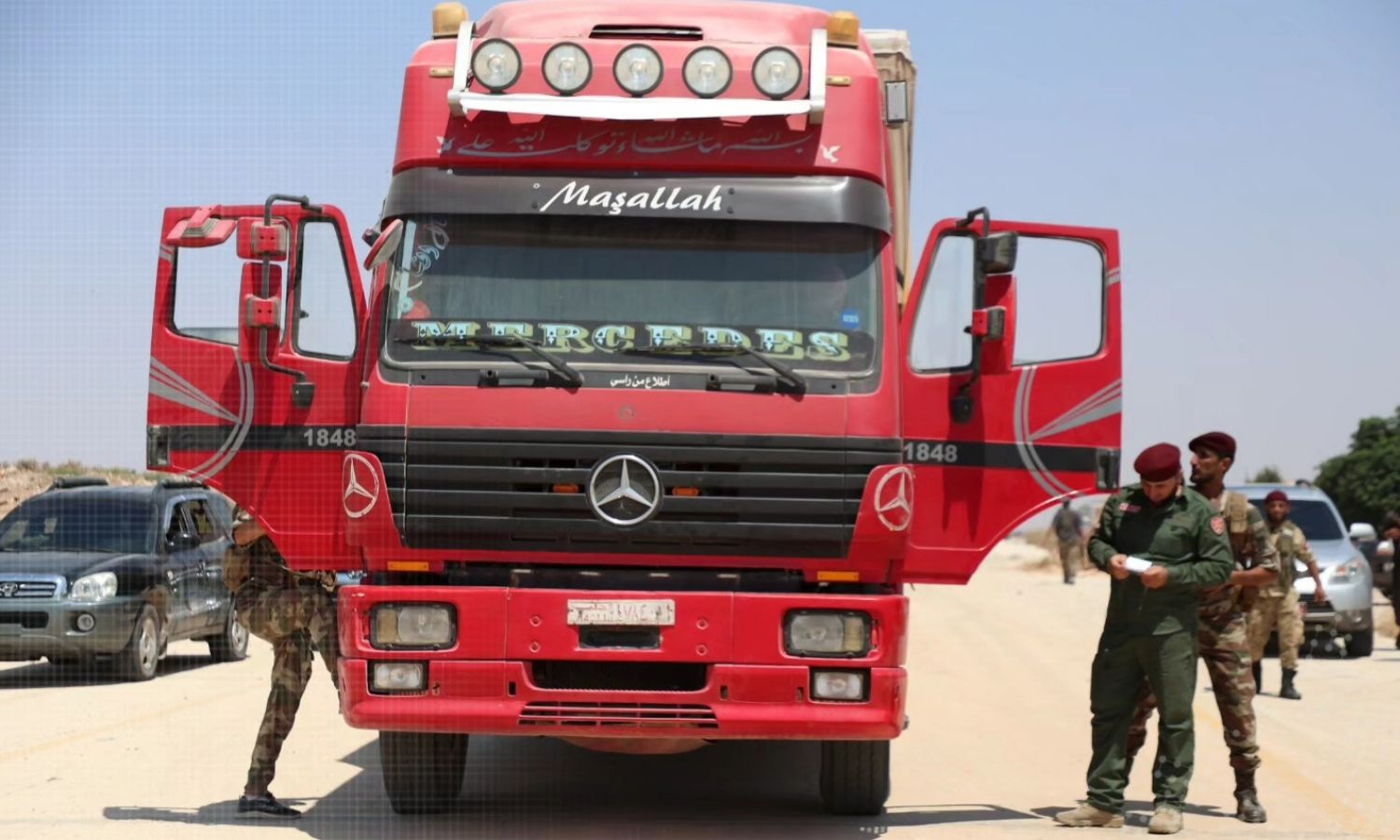
Opening the Abu al-Zandeen crossing in Aleppo’s countryside – August 19, 2024 (Syrian Press Agency – SPA)
Stimulating the region’s economy
Indicators suggest a “very limited” impact of reopening the Abu al-Zandeen crossing on the region’s revival and the extent to which traders, farmers, and residents benefit across different control areas. According to economic expert Radwan al-Dibs, the primary reason is the fragile economic situation in regime areas and northern Aleppo.
Al-Dibs told Enab Baladi that Turkish goods are abundantly present in northern Aleppo, which may hinder imports from regime areas, while the latter suffers from a shortage of various basic materials, according to the researcher.
Al-Dibs didn’t rule out potential changes in economic activities for both regions but noted that these might appear in the long term, pointing out that the resumption of trade through the crossing without obstacles could steer traders towards certain industries or agricultural sectors in demand by either side.
Assistant researcher Abdul Azim al-Mugharbel believes that exporting agricultural and industrial products through Abu al-Zandeen will increase profits for traders and farmers and help increase the amount of money circulating in the region.
The effects could achieve slight economic improvements in the region and promote some development, provided there is a designated financial return for civil entities in the area, according to al-Mugharbel, emphasizing that despite the presence of smuggling routes, official trade activities will be more active at an official crossing, as long as no security issues arise.
According to an analytical report published by Candle Studies on August 19th, both the opposition and the Syrian regime aim to achieve various interests through reopening the crossing.
The opposition’s interests include revitalizing industrial cities in northern Aleppo and opening new markets to sell their products in regime areas, negotiating with the regime for certificates of origin to allow industrialists to export their goods abroad, and exporting surplus agricultural products to regime areas, particularly wheat.
The regime’s interests in this context include alleviating the economic crisis in its areas, exporting food and medicine, and raw materials to opposition areas, as well as benefiting from transit routes and generating significant financial profits from trade convoys moving from Turkey to the Gulf.
The analytical report indicated that the regime might force northern Syrian industrialists to register with its commerce and industry ministries to obtain certificates of origin.
The regime might then aim to negotiate with the Turkish side to take over managing external crossings like Bab al-Salamah, aiming to open international trade routes through the M4 international highway to Jordan via the Nassib crossing, and then to the Gulf, where the regime would benefit from transit fees, and Turkey would benefit from land exports to the Gulf, according to the report.
if you think the article contain wrong information or you have additional details Send Correction
النسخة العربية من المقال
-
Follow us :
Most viewed
- 311 casualties among government forces and civilians in Syrian coast
- Al-Sharaa and Abdi reach agreement on merger of SDF into Syrian state
- Syrian Defense Ministry appoints "Abu Amsha" as Hama Brigade commander
- Did Syrian state fall into coastal ambush?
- Rights organization documents government and civilian deaths in Syrian coast












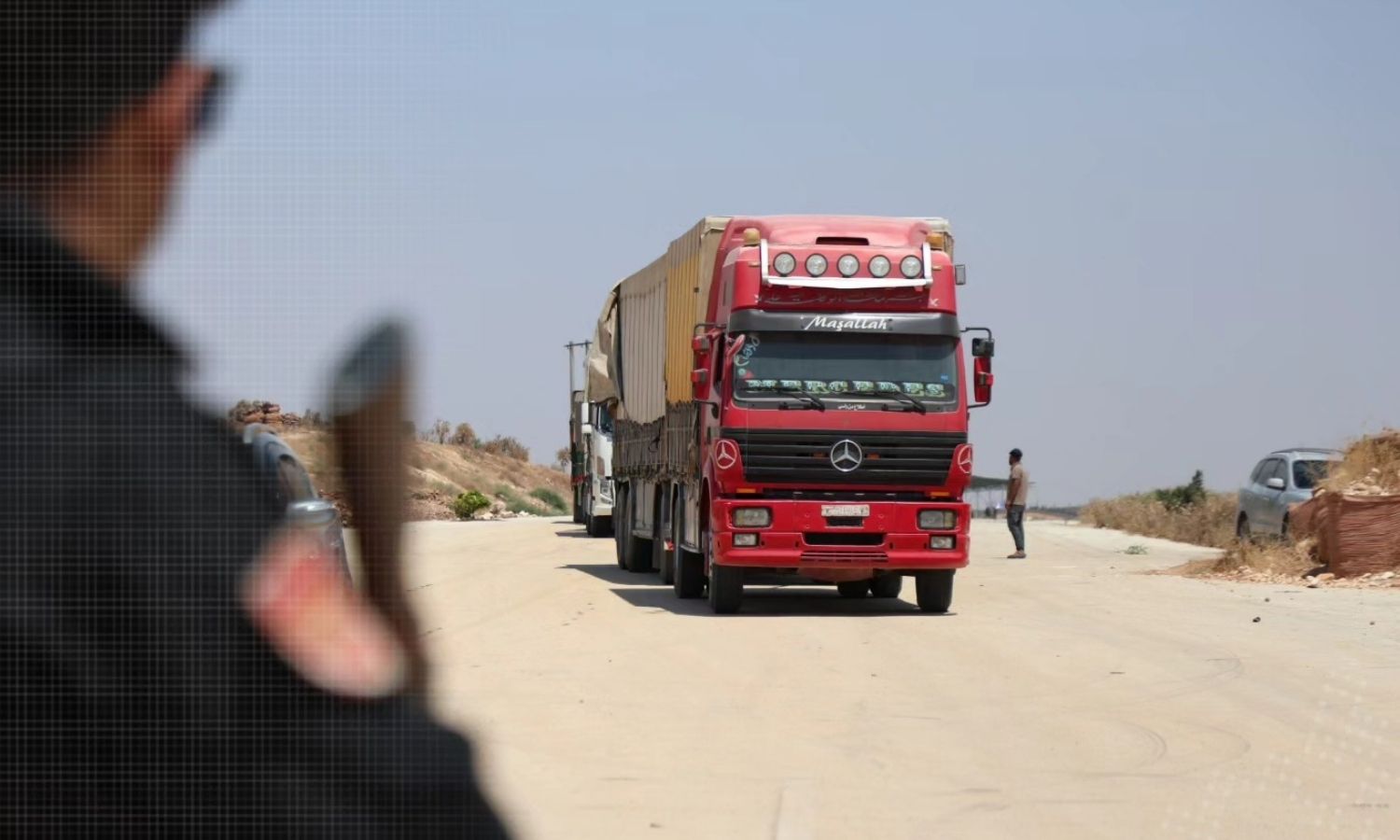
 The opening of Abu al-Zandeen crossing in rural Aleppo - August 19, 2024 (Syrian Press Agency)
The opening of Abu al-Zandeen crossing in rural Aleppo - August 19, 2024 (Syrian Press Agency)





 A
A
A
A
A
A




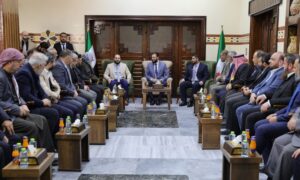
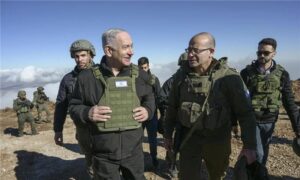
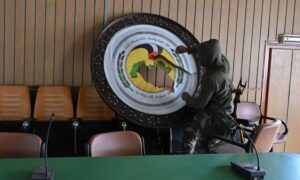
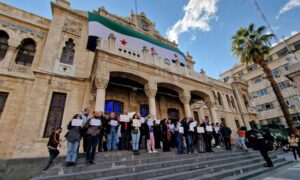
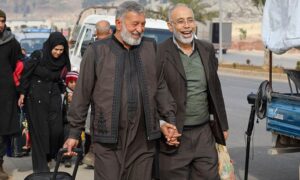
 More In-Depth
More In-Depth